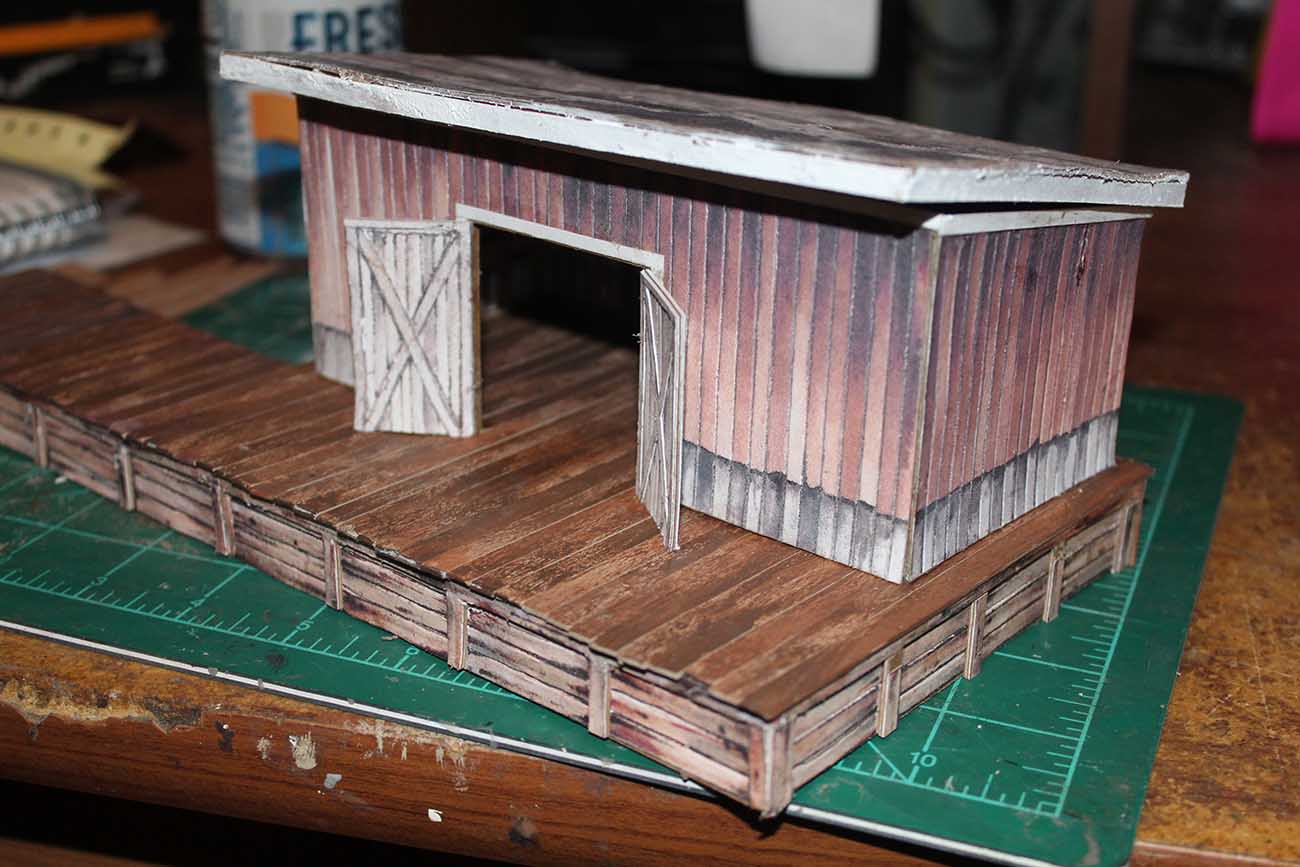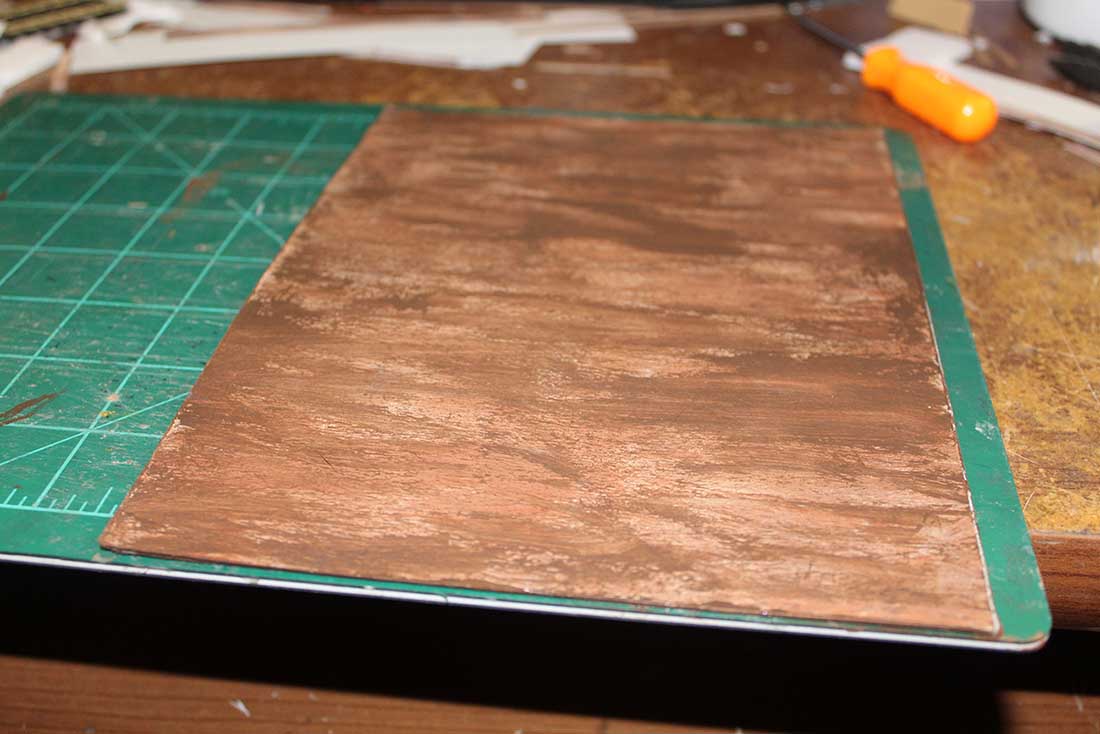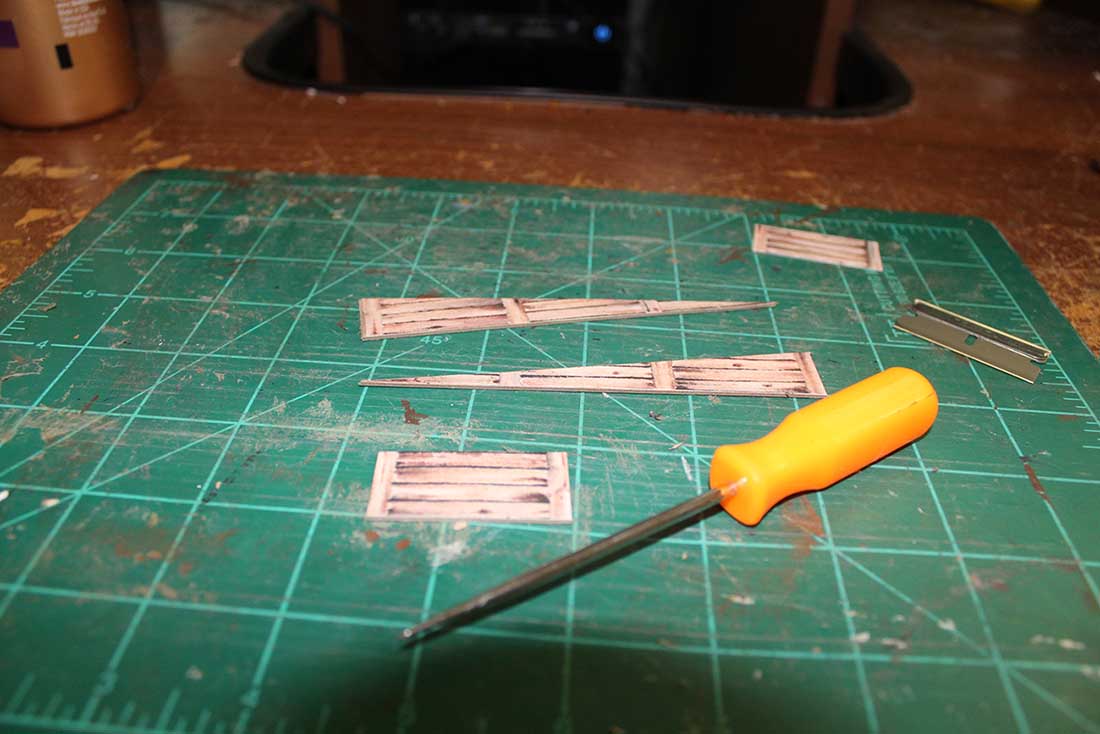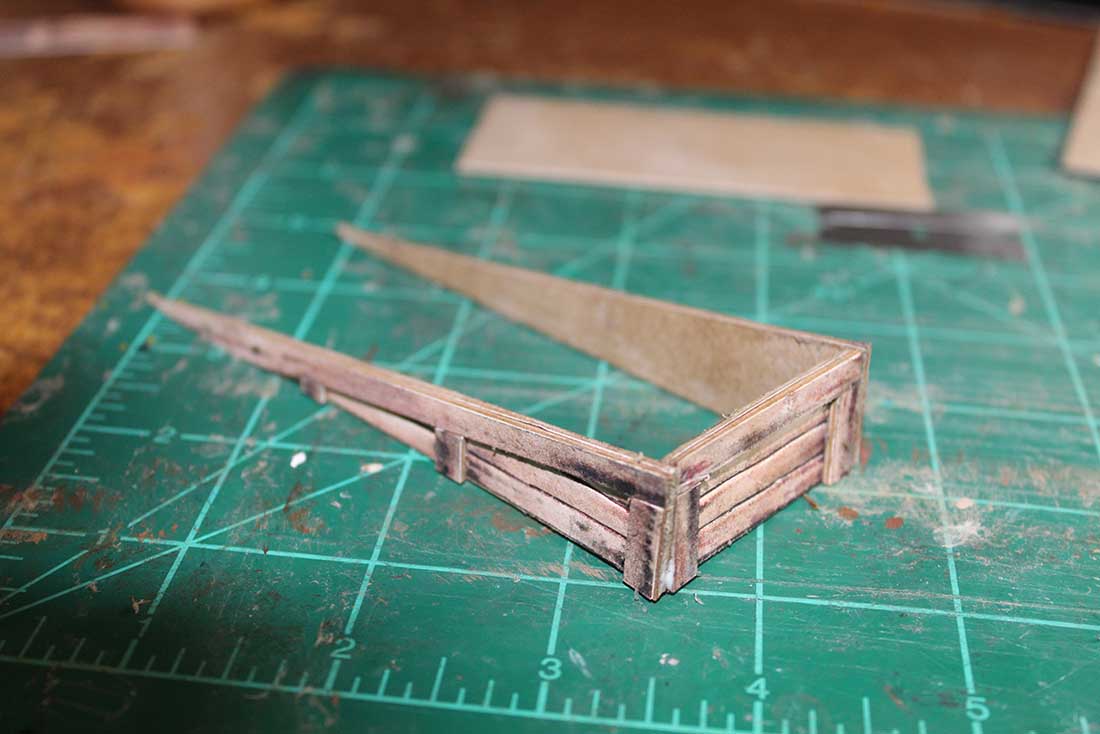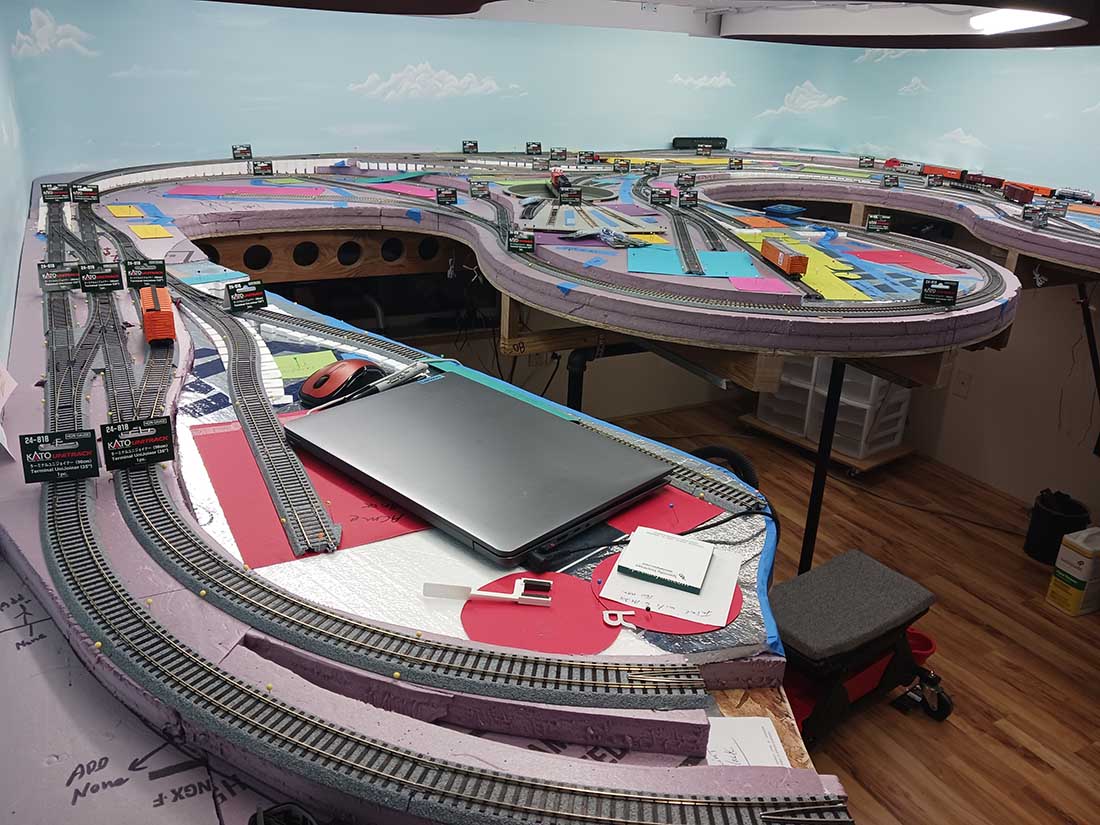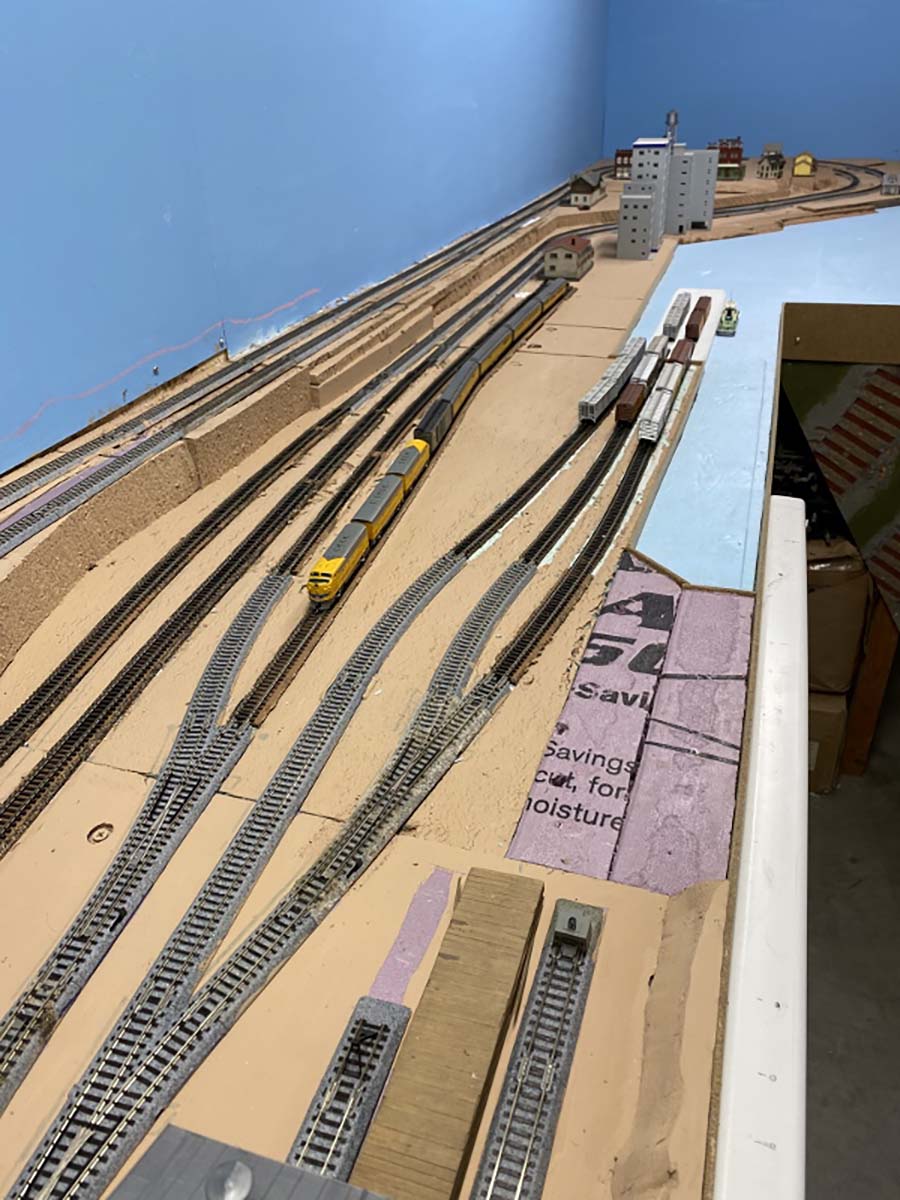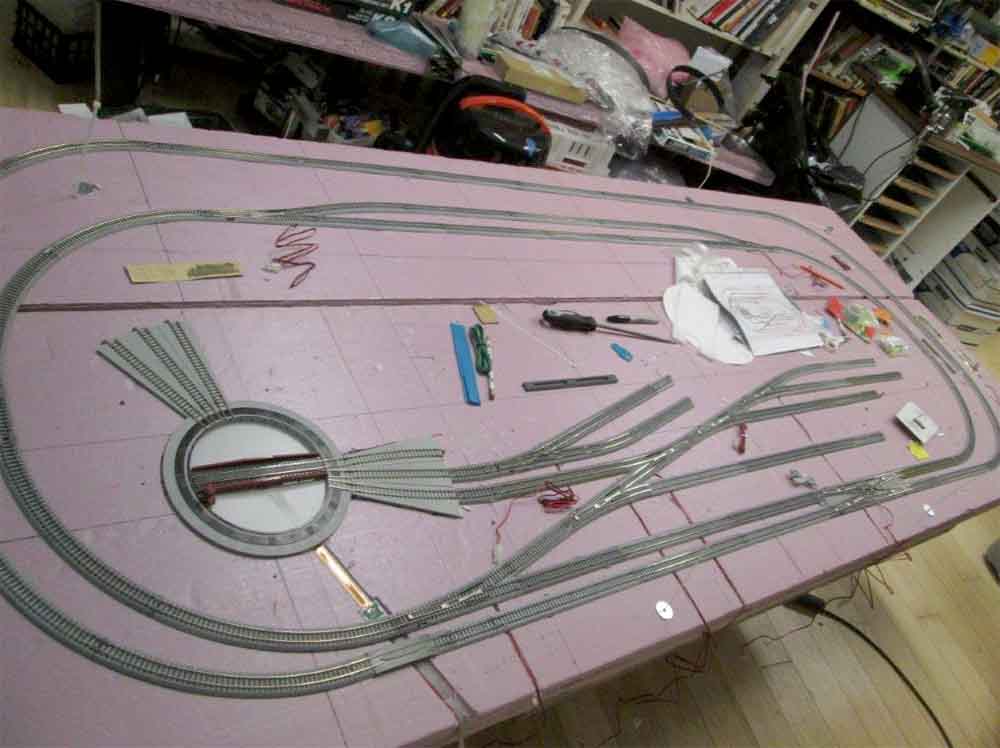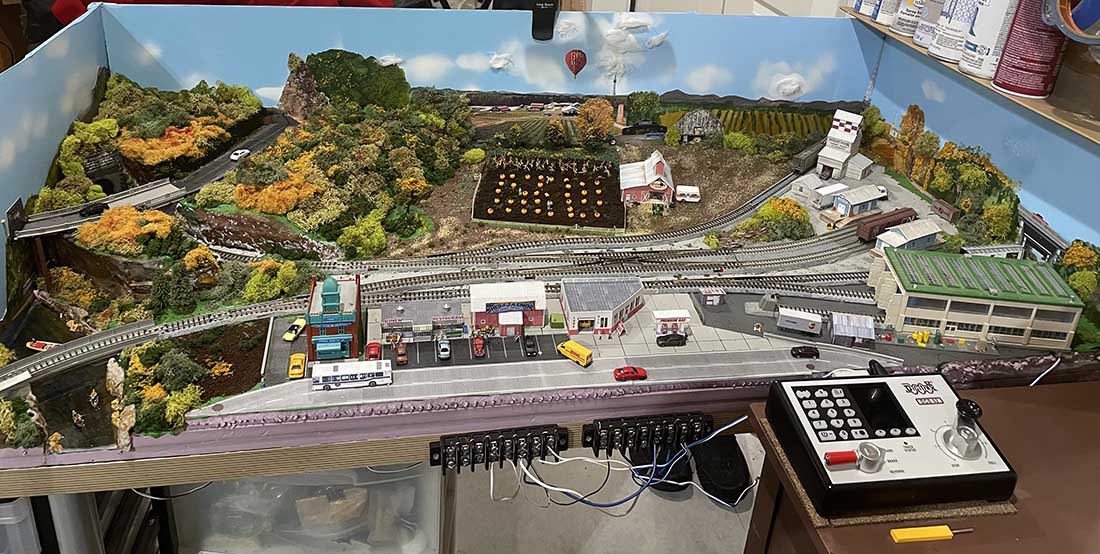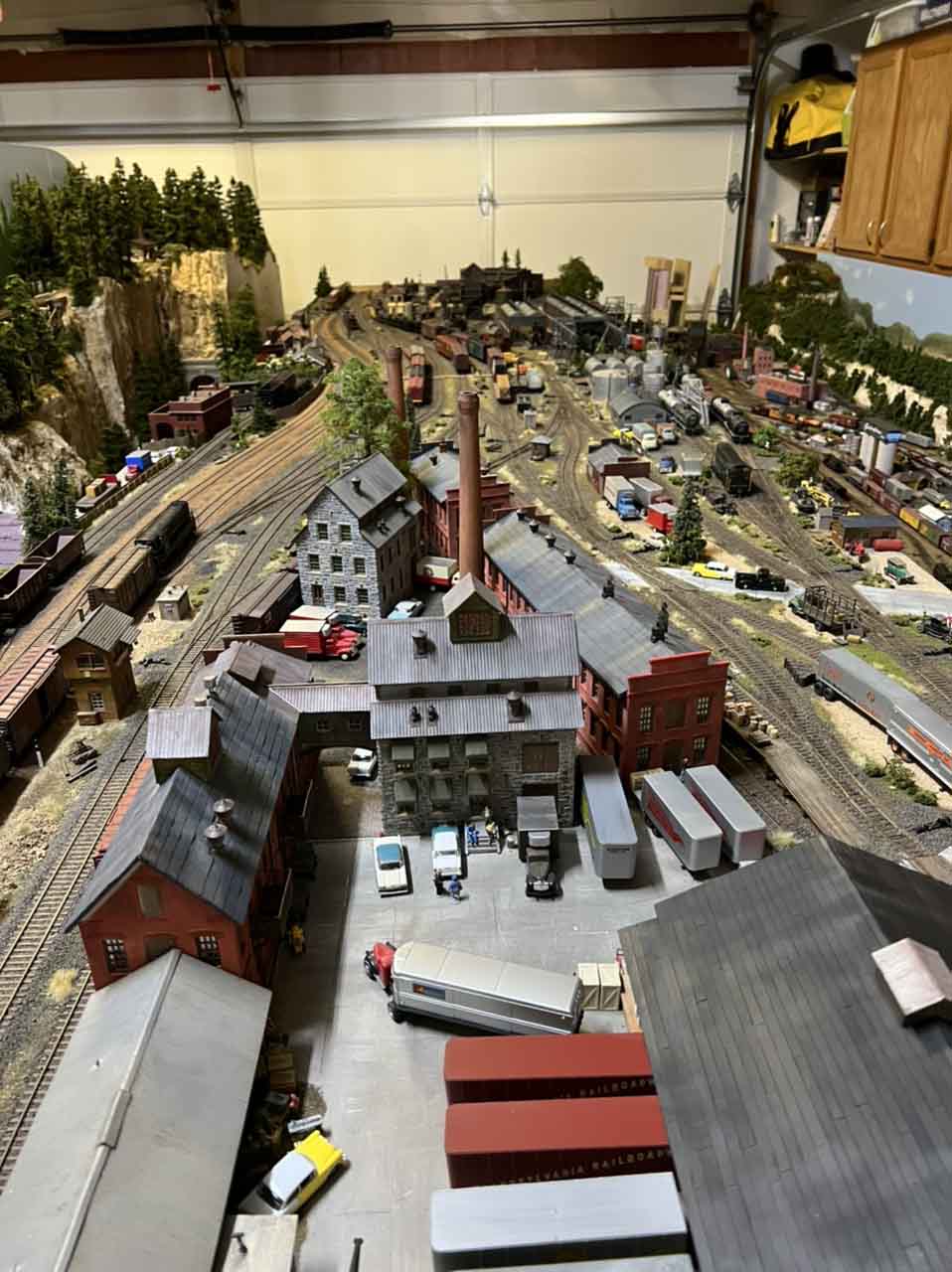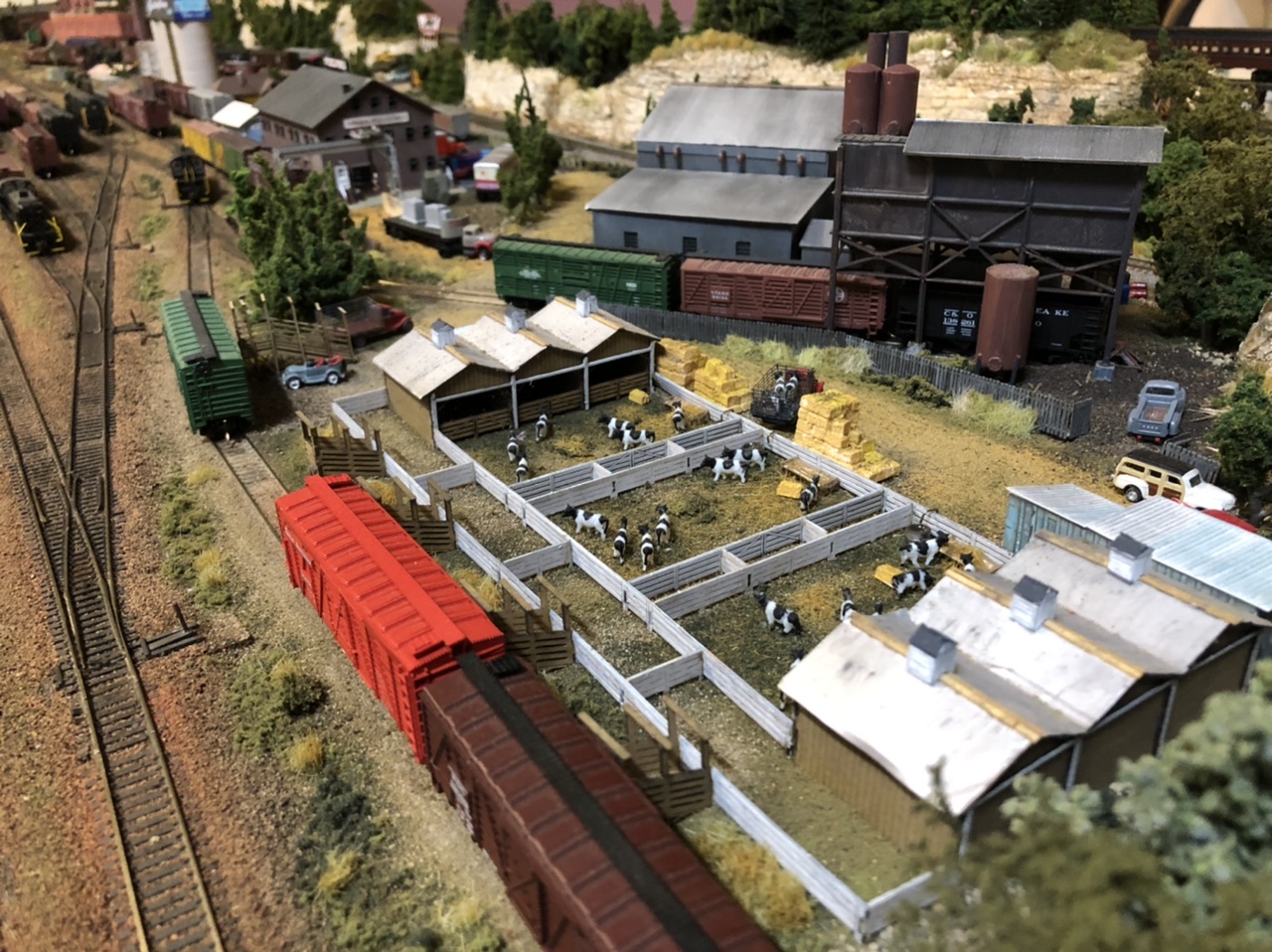John’s been in touch – he’s added to the collection of free HO scale cardstock buildings.
(In fact, just by reducing the print size, they can be any scale – for N scale just reduce the print by 54%)
Here’s the free cardstock download:
Click here to download the free cardstock freight shed.
You don’t even need to give your email address to download – but if you enjoy this post and the free freight shed, you may want to jump on to the newsletter where there is much more like this.
There are lots more buildings – not free – here: printable buildings.
There are no instructions on the download, but everything you need is below, as with all the free HO scale cardstock buildings:
“Dear Al…
The Shed Story now begins…
Two days into Al’s challenge I offered some “Work In Progress” photos…
This is a small freight shed…
The building now has a roof…
I intend to add a ramp and a small matching office…
How I built my freight shed…
The shed portion came first…
The covered bridge kit was first printed out as it comes…
It was then cut up to give me the pieces that I needed…
Those pieces were then copied at 135% to give me what I wanted…
The width of the boards, how high the boards needed to be and so on…
These were then glued to cardboard salvaged from soda can boxes…
They were glued to both sides of the cardboard and both sides were
scribed with an awl to give texture and relief (making it look like individual boards),
Card models tend to need interior support to keep warping down…
Balsa is popular but in building the Porterhouse I discovered I could use card as well
The use of card gives detail to the interior walls of the building…
The interior detail is important when one is in O scale and plans to have open doors!
The door opening was sized from the doors of Al’s barn kit… printed and then copied at a scale to suitl
Note, the ends were cut before the interior detailing was added…
All was measured to the best ability…
And space was left so that it would all fit together
Once I had my walls finished…
I glued the shed together…
Once the shed was together so I had a better idea of how it would all fit, I began the base… The platform was made of foam core board.
I framed the foam core board to allow for track height and the height of the floor of a box or flat car.
Once I had the platform roughed in, the detailing came…
I used Al’s wooden tunnel set printed as it comes…
Actually I reduced it to 95% on the print out…
HO kit, printed a little undersized… For an O scale building…
That is “Eye Scale” for you!
The prints were glued to double thick card.
The timbers were cut and then it was all glued to another print…
and glued to more card… this allowed me to scribe the boards behind the timber framing…
When I went to make the top of the platform, I did not find a print that suited me…
So I made my own texture and boards…
Double layer of card glued together, random painting with craft paints…
Boards were cut at 1/4 inch to represent 2 by 12 boards…
The finished platform…
And the shed glued in place…
The doors for the shed were made from the barn kit as mentioned above… Four printed layers and one layer of card all assembled as mentioned when sharing the shed platform build.
All that is missing is a roof now…
Now I build the roof…
the base is again a double layer of card that has been scribed to represent boards.
I took one of the textures from Al’s concrete and asphalt sheet.
I chose the one that looked most like asphalt (probably for a road)
Printed it up and then copied the print at 160% to get the size I needed..
This time I tried something different… I purchased some tissue paper and spray glue.
I sprayed a standard (American) 8.5 inch by 11 inch sheet of printing paper and then put it glue side down in the tissue…
I wanted texture and something that would absorb the ink and fade it a bit…
I cut the resulting print into scale 2 foot by 16 foot sheets…
Once I had the sheets of “Asphalt” and the base, the time had arrived to “roof the roof” — Layering the “Asphalt” sheets…
Once I had the “Asphalt” on the roof…
I needed to frame it…
This allows the roof to be removable and keeps it on the building as well.
I hope you have enjoyed all these..
I do apologize for the length of this…
I hope the details help others…
Here is the completed build as it is so far…
I built a ramp to go with my freight shed…
An office will follow soon.
The ramp construction may give more detailfor things in my tutorial on the shed…
When building my structures I use “recycled” cardboard from soda can boxes and similar boxes.
I used to remove the waxy side “decorations” with steel wool.
I now use a rubber sanding sponge.. Faster and it does not cut my fingers.
I also use Aleene’s “Tacky Glue” for most of my work.
After securing the print to the prepared card, I scribe the board lines with a cheap awl that I got from Harbor Freight…
This gives definition and a 3d effect to the boards.
Once I had the sides done, I cut “boards” to finish them
These were from the Wood tunnel print.
Once that was complete I glued the side pieces of the ramp together.
Once I had the ramp together, I had to stiffen it up before adding the top boards.
The top boards are painted card (Random browns)
To give the effect I was looking for and to match the planking that I made for the shed platform.
My completed ramp with the rest of the shed and its platform…
I only made one ramp but there are two or three places that I can use it…
I mentioned that I wanted to build a little office to go with my freight shed…
I did and here it is!
When I built my freight shed that was inspired by Al’s contest…
I decided that it needed a shed to be an office…
Today I built that shed!
The walls are from left over extra prints from Al’s covered bridge.
The windows are from a small shed that is sold with a water tank..
The door is from one of the Garages that is part of the “Big Kahuna Deal”
“Wood” for the floor and the interior of the roof comes from his Corn Elevator…
(Also part of the Big Kahuna Deal).
The roof is from one of his engine house kits (the brick one).
The windows have “glass” from the “blister” off a package of track.
The windows and the door are in an open position to “invite” viewers in…
Here is what my “Office” looks like with the ramp and shed.
This is the intended position…
BUT… Since the ramp, office, and shed are three separate models…
John”
A huge big thank you to John for putting this ‘how to’ together on one of the free HO scale cardstock buildings.
(You can buy a whole load of printable buildings here too for the very silly price of just $29)
In HO scale or any scale come to that – there are always railroad accessories that enhance the realism and detail of your model train layout.
These accessories include thing like diesel storage tanks, cable drums, and storage sheds. If you look at any picture of a railroad for example, you’ll see lots of stuff lying around. Any of these add an extra touch of authenticity to any scene.
And believe it or not, there’s a way to make unlimited ‘train accessories’ like diesel storage tanks and they are perfect for replicating other things commonly found in real-life rail yards.
Here’s Brian showing how it’s done with his silicone molds..
And the same goes for cable drums or any other train related equipment you see lying around along the tracks – they are easy to make with these molds. There’s quite a lot of you getting involved with 3D printing too.
That’s all for today folks.
Please do keep ’em coming.
And if today is the day you get started on your layout, the Beginner’s Guide is here.
Best
Al
PS N scale card stock buildings free
